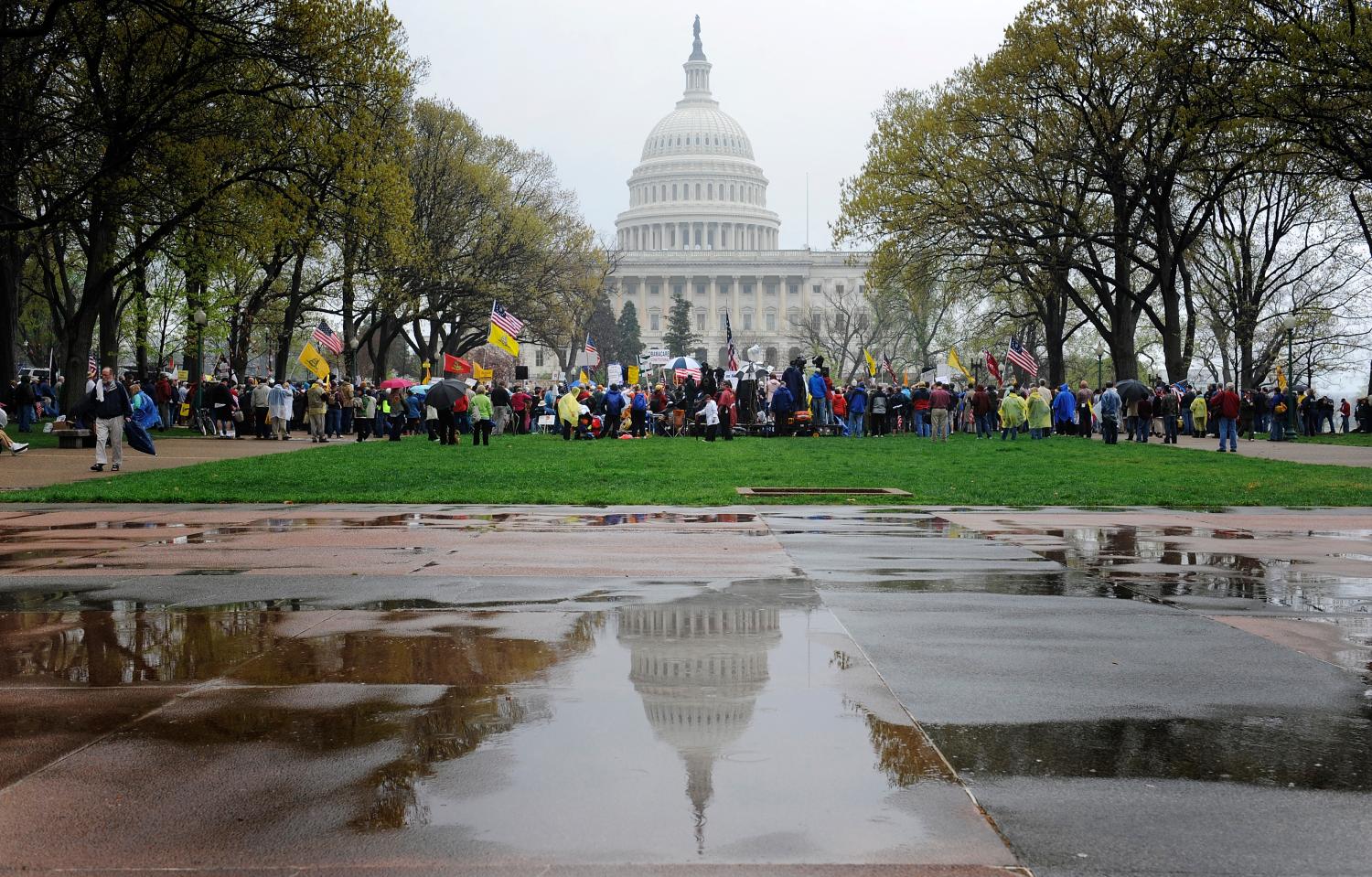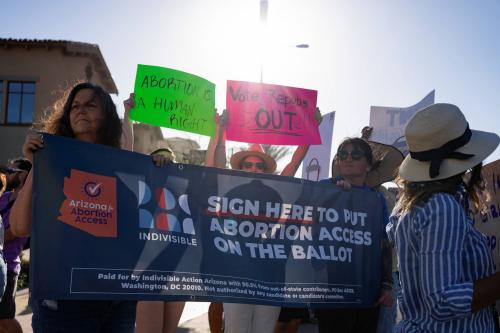Follow @BICampaign2012
Editor’s Note: For Campaign 2012, William Galston wrote a policy brief proposing ideas for the next president on political and institutional reform in America. The following paper is a response to Galston’s piece from Sarah Binder. Russ Whitehurst also prepared a response arguing that there is no lack of ideas about reform, but that judgments about whether reforms are bold or wise represent points of view that can be worked out in the political process.
Like William Galston, I am frustrated with the lack of attention to institutional reform paid by both political parties in the 2012 presidential campaign. And I agree with his two most important points: political institutions have a direct impact on the shape of lawmakers’ policy choices, and a series of institutional reforms could help to resolve a wide range of vexing national problems. Galston’s search for targeted institutional reforms is precisely the type of creative thinking that should be coming from the policy staffs of the two presidential campaigns. (The campaigns would be wise to steal some of his innovate solutions and claim them as their own!)
To dig a little deeper into the difficulties of institutional reform, I would offer a different formulation of institutions than Galston does. Institutions, Galston eloquently suggests, are “arenas of cooperation structured by rules.” Certainly some institutions do reflect voluntary cooperation. Congress’s committee system is usually considered a cooperative institution: a “gains-from-trade” model in which legislators are granted full control over the shape of policy within their own committees. In return, legislators refrain from intervening in the decisions of other committees and defer to those committees’ policy choices. In short, a giant logroll ensures that all legislators are made better off and none worse off by cooperating within the committee system.
Borrowing from the work of Stanford political scientist Terry Moe, however, I tend to think that this might be “an overly benign view of what institutions are and what they do.” As Moe points out, institutions are structures of power rather than of cooperation. As such, political institutions may be “good for some people and bad for others, depending on who has the power to impose their will.” In short, winners seek to bend institutions to their advantage. Why is this theoretical distinction important? The way political institutions are conceptualized has implications for the capacity of legislators to undertake reform that improves the functioning of Congress and that builds better policymaking institutions.
The politics of institutional reform in Congress are akin to a catch-22. Everyone knows that institutional changes can bring about a different set of power arrangements and policy outcomes. For example, reformers for good reason decry dismal confirmation rates for recent presidents’ judicial nominations. Reforms that would ban the filibuster of judicial nominations are not neutral in their impact, of course. They would enhance the president’s ability to place judges on the federal bench who more closely reflect the executive’s policy views, rather than the views of an ideological foe of the president who might otherwise filibuster to prevent the nomination from coming to a vote.
Structural reforms that affect policy outcomes also have distributive consequences. For example, placing tax loopholes automatically on the chopping block if Congress fails to take the advice of experts on reforming the tax code would disadvantage current beneficiaries of tax expenditures, who tend to be among the most affluent Americans. In other words, the perceived impact of institutional reform becomes an obstacle to change. So long as interested players can calculate how reform will redistribute costs and benefits to favored constituencies (and to themselves), potentially disadvantaged groups (and legislators) will lobby to protect their shares from reform.
Institutional reform in Congress is also complicated by the players’ calculations about their future status under new rules. Take President Obama’s constitutionally controversial decision to make four recess appointments in January of 2012 to the Consumer Financial Protection Bureau and the National Labor Relations Board, even though Republicans claimed that the Senate was not in recess. One might expect Republicans and their supporters to pursue legal action against the appointments on the grounds that the president’s move undermined the Senate’s constitutional authority to offer its advice and consent on executive appointments. But Republicans know as well that a future GOP president might face similar levels of opposition to his appointments and thus also exploit the new bounds of the recess appointment power—despite Republican protests of Obama’s perceived power grab. Legislators are acutely aware of the potential future impact of rules and practices and tend to craft their views about institutional design accordingly. To be sure, legislators do sometimes discount their future political needs and make institutional choices that reflect their immediate concerns. After all, Democrats opted for a single director of the Consumer Financial Protection Bureau (CFPB) in passing Dodd-Frank, even though they surely understood that a future GOP president might install a director with policy views significantly at odds with Democratic priorities. In this case, creating a new powerful regulator to be appointed by a Democratic president trumped legislators’ concerns about the future.
Because institutions are structures of power, reform is difficult and typically beyond the reach of legislators. That gives rise, of course, to Galston’s important observation that institutional reform so often takes place in the wake of crisis. The consequences of failing to engage in timely reform loom large in such circumstances, enhancing the power of reformers to gain the upper hand in negotiating new organizational structures and rules of the game. The result is the wide range of landmark constitutional and institutional bodies cataloged by Galston. Many aspects of the nation’s social, political, and economic lives are unthinkable without these institutional innovations.
Does today’s Congress have the capacity to rise to the challenge of embarking on institutional reform? Not surprisingly, the most important institutional accomplishments of the Obama administration to date—the Independent Payment Advisory Board and CFPB—took place in a period of single-party control of government with a filibuster- or near-filibuster-proof Senate majority. Divided party control has not been so kind to the Democrats. It gave rise to an unprecedented super committee, but not much more. I would wager that significant institutional innovations are unlikely so long as the two parties perceive that a return to unified party control is within reach. As Frances Lee has recently argued, continual uncertainty about the future control of Congress has changed congressional incentives: legislators have few incentives to compromise on their party’s priorities if unalloyed control of government is a possibility. Or as Mo Fiorina has noted, revived electoral competition has increased the value of controlling the reigns of government, encouraging the parties to play to their bases and to drag their feet on compromise whenever they can. No wonder that nothing much gets done except in the face of looming deadlines and fading crises, if anything gets done at all.




